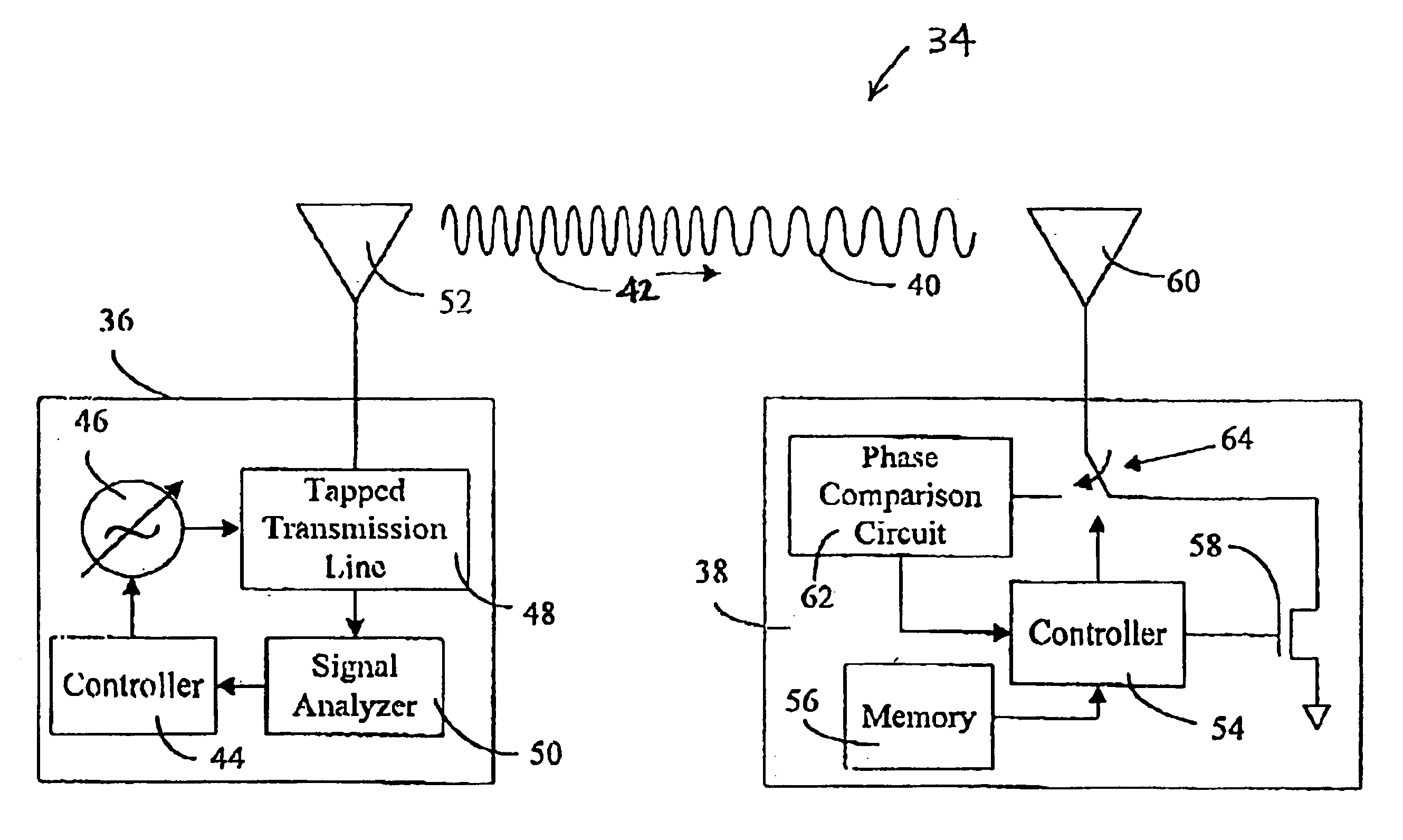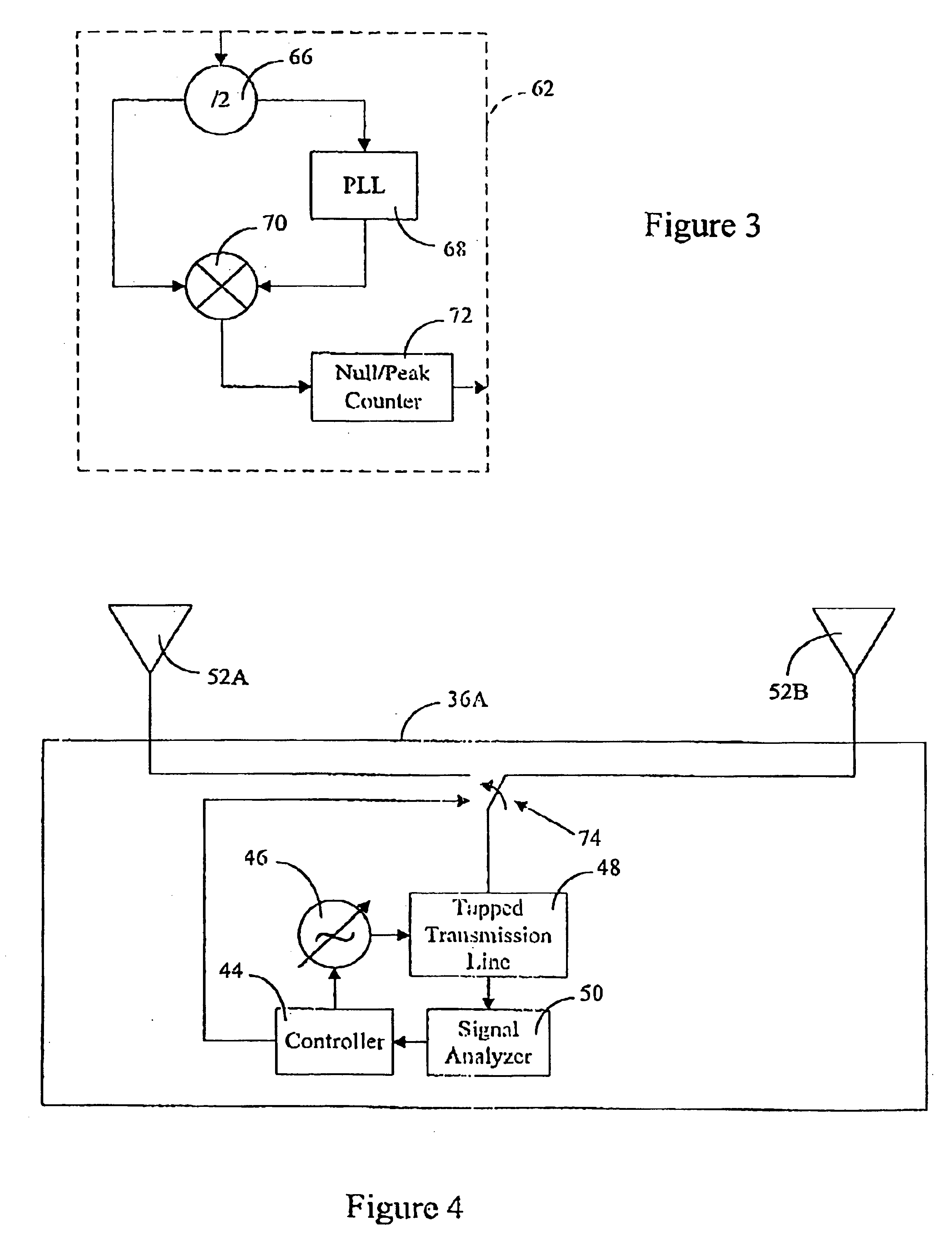Distance/ranging by determination of RF phase delta
a technology of rf phase delta and distance/range, applied in the field of radio frequency identification tags, can solve the problems of prior art interrogator not being able to determine whether the rf tag is in front of, behind, or to either side of the interrogator, and cannot determine whether it is 90 meters or 45 meters away
- Summary
- Abstract
- Description
- Claims
- Application Information
AI Technical Summary
Benefits of technology
Problems solved by technology
Method used
Image
Examples
Embodiment Construction
As shown in FIG. 2, an embodiment of the present invention is directed to an RF communication system 34 that determines a distance between a reader or interrogator 36 and an RE transponder or tag 38. The system 34 determines the distance by transmitting from the interrogator 36 to the RF tag 38 a first signal 40 at a first frequency and a frequency modulated second signal 42 at a second frequency. The RF tag 38 compares the signals 40, 42 and determines a phase difference between the two signals. The distance between the interrogator 36 and the RF tag 38 is directed related to that detected phase difference.
The interrogator 36 includes a controller 44, a variable signal source 46, a tapped transmission line 48, a signal analyzer 50, and an antenna 52. The controller 44 can be any general purpose processor, such as a known microprocessor, or can be specifically designed to control the operation of the interrogator 36 as described herein. Examples of the tapped transmission line 48 an...
PUM
 Login to View More
Login to View More Abstract
Description
Claims
Application Information
 Login to View More
Login to View More - R&D
- Intellectual Property
- Life Sciences
- Materials
- Tech Scout
- Unparalleled Data Quality
- Higher Quality Content
- 60% Fewer Hallucinations
Browse by: Latest US Patents, China's latest patents, Technical Efficacy Thesaurus, Application Domain, Technology Topic, Popular Technical Reports.
© 2025 PatSnap. All rights reserved.Legal|Privacy policy|Modern Slavery Act Transparency Statement|Sitemap|About US| Contact US: help@patsnap.com



